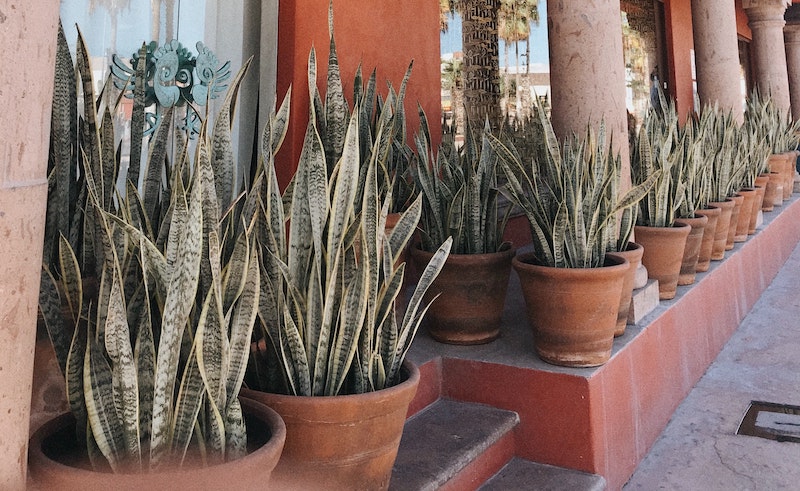Snake Plants are such a popular houseplant due to their adaptability to different light levels, making them easy to place in many different areas of the home or office. They can survive low-light conditions but higher sunlight exposure can greatly benefit the plant. Snake Plants will enjoy being moved outdoors in late spring to receive more sunlight.
More sunlight exposure will produce more vibrant variegation and can promote faster growth. The main challenge to moving your Snake Plant outdoors is avoiding potential burn from exposing the foliage to sunlight too quickly. Snake Plants should be gradually given more sunlight over a period of about one to two weeks so that they can adapt slowly.

When To Put Snake Plants Outside
Snake Plants do not like the cold! You should never move your Snake Plant outdoors if the temperature is below 50 degrees F. Springtime is a good time to move your Snake Plant outdoors but only when temperatures are consistently above 50 degrees overnight.
Spring weather can be volatile, swinging from highs to lows with cold snaps overnight, so it is important to closely monitor the weather before moving your plant outdoors. Snake Plants can survive temperatures down to 40 degrees Fahrenheit and upwards of 100 degrees.
When To Bring Snake Plants Indoors
When transitioning your plant from outdoors to indoors in the fall, the process should be reversed. As the season begins to change, you can begin to prepare your Snake Plant to move back indoors. Gradually move your Snake Plant into lower light to prepare it for the transition. Move the plant into shadier locations slowly for longer periods of time, so that it is not a shock once indoors. This will also adjust the plant to the different temperatures and humidity levels found indoors.
Another important step when bringing your plants indoors for the season is to thoroughly clean pots and scout for pests. Bringing unwanted pests indoors can quickly become an infestation overnight, so make sure to thoroughly inspect your Snake Plant’s foliage and soil. You can wipe down all sides of the foliage while inspecting the plant, removing any signs of pests, and closely monitor the plant to see if any pests return after removal.
Brush and disturb the potting soil to remove any pests or animals that have taken up residence in your Snake Plant’s pot. Once you’ve scouted, cleaned, and monitored the plant for at least a week, you can bring your Snake Plant into a temporary quarantine space indoors. This will allow you to again monitor and scout for pests and will prevent any unintentional spread of pests!

Caring For Snake Plants Outdoors
Caring for your Snake Plant outdoors is slightly different from caring for it indoors. It is important to slowly transition your Snake Plant into its outdoor location. Harden off the plant by moving it initially into a more sheltered location, protecting it from sun, wind, and rain. Slowly move the plant into its final location in a spot that has indirect dappled sunlight as you gradually transition it into more sunlight.
Outdoor plants require more frequent watering than indoor houseplants since the soil dries up more quickly from the sun and wind. Be mindful that dark colored pots can heat up and dry out more quickly than light colored containers. Regularly monitor the moisture level of the soil, and water thoroughly when completely dry.
Snake Plants do not like being overwatered, so it is important to verify that the soil is completely dry before watering. Outdoor container plants are also more vulnerable to extreme wind or rainstorms; make sure to protect plants from falling over and breaking, and from foliage damage.
 |
Author Katie Endicott - Published 5-23-2023 |
